Literacy Lessons for Beginning AAC Learners
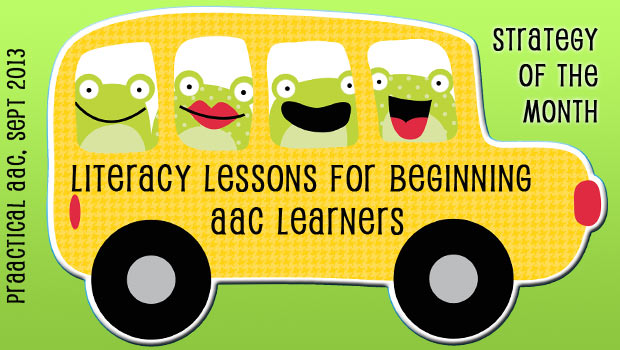
Like some of you, we are often met with skepticism when we encourage teams to work on literacy skills with individuals who are still learning the very basics of communication. Recently, we had the opportunity to begin this journey anew, and model a literacy lesson for kindergartners who have no formal communication system, are not answering yes/no questions, and do not consistently select preferred items when offered choices.
Why work on literacy with students who are not routinely expressing their basic preferences?
- Because the longer we wait, the longer it will take to get there.
- Because it offers wonderful opportunities to build communication, too.
- Because when other people see us teaching reading and writing, it changes their perception of the student in a positive way.
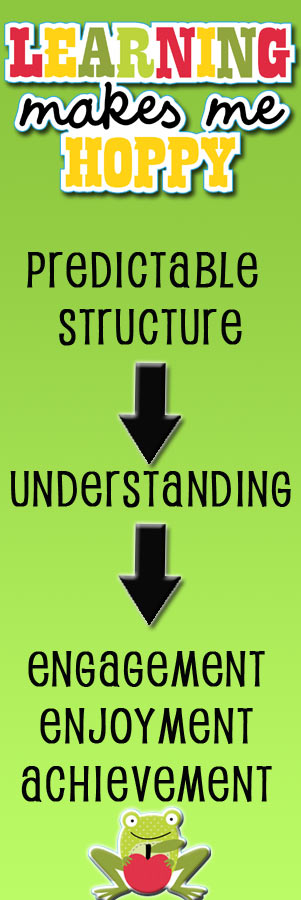
- Because they will enjoy it.
- Because there are mandates for us to address the general education curriculum.
- Because if we set the bar high and provide appropriate instruction, they can learn.
Rather than talking in general terms about how to implement literacy instruction with beginning learners of AAC, we decided to share the activities and intervention strategies that we used.
Mini Schedule
We’ve written plenty of posts about the value of using visual schedules. They are usually the first thing that we put into place no matter the age or abilities of the learner. Object schedule, picture schedule, or written agenda: We find these to be helpful for both the learner and for keeping the interventionist on track. In this case, we used a mini-schedule that had check-off boxes for each of the activities that we plan to do on a routine basis.
Predictable Structure
Predictability builds understanding. Understanding promotes engagement, enjoyment, and achievement. To put this concept into action, we decided on a set routine and name for our literacy lesson. Here are the elements of our “Book Talk” routine.
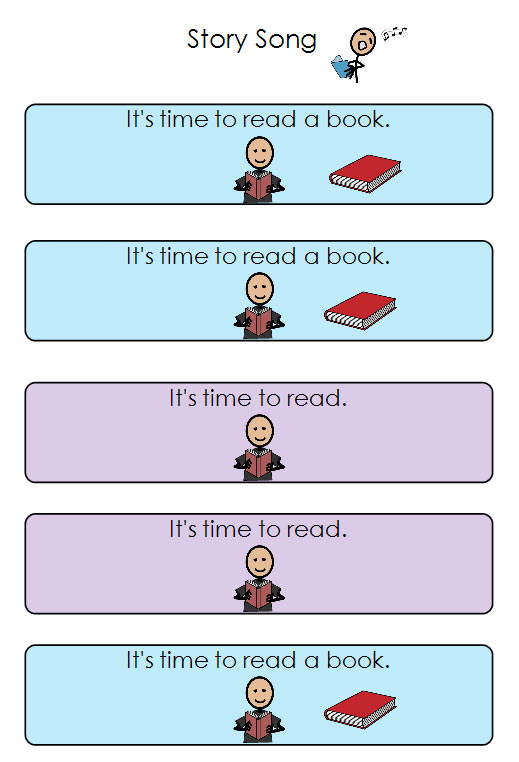 Story Song: As we’ve said before in this space, there is indescribable power in music. Starting with the same, simple song every time we initiate this lesson will help to alert the brain that it’s time to do this activity. I favor making up my own simple songs with repetition, key vocabulary, and a familiar tune.
Story Song: As we’ve said before in this space, there is indescribable power in music. Starting with the same, simple song every time we initiate this lesson will help to alert the brain that it’s time to do this activity. I favor making up my own simple songs with repetition, key vocabulary, and a familiar tune.- Look and Guess: Take a picture walk by paging through the book, looking at the illustrations, talking about what we see, and making some guesses about the story. Previewing the book gives us a chance to do two important things: (a) activate and build background knowledge and (b) begin using the vocabulary pertinent to this story.
- Read Our Book: When the time comes for actually reading the book, we try to get through as much of the book as we can while still keeping them engaged. My goal is to stop before they lose interest so that they are eager to participate the next time we do this lesson. Drs. Karen Erickson and David Koppenhaver helped us really understand the notion of reading with a purpose and varying that purpose with repeated readings of a book. We read with a purpose in mind (e.g., find out who is in the story, all the things they did, how she felt) and focus on engaging the learners. Active engagement is a therapist’s best friend!
- Letter Hunt: While alphabetic knowledge may not be our highest priority at the moment, we still want to take the opportunity for reinforcing the classroom’s Letter of the Week. We look at our special letter and then try to find it on a few pages.
- Letter Song: We love using chants or songs to build letter-sound correspondence. By
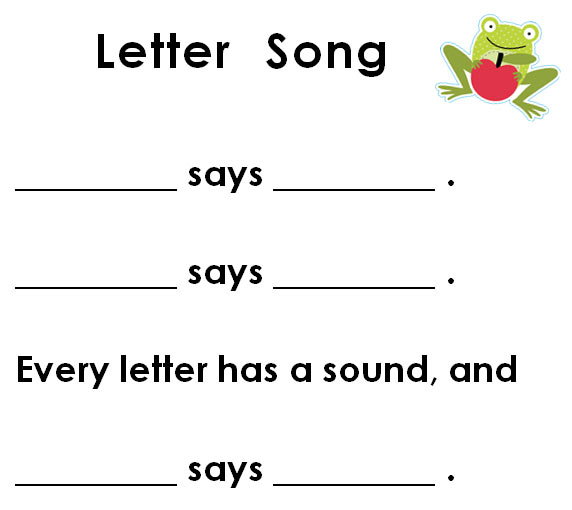 singing slowly and pausing in just the right places, we can use simple voice-output (talking switches) to have each student say the sound for our target letter.
singing slowly and pausing in just the right places, we can use simple voice-output (talking switches) to have each student say the sound for our target letter. - Write About It: Dr. Caroline Musselwhite has taught us so much about ways to use writing to build communication skills, that we wouldn’t dare let this opportunity to slip by. In our first lesson, we just wrote a narrative about our activity and took turns ‘signing’ it. Later on, we’ll add some more targeted writing practice, but we did this just to get the ball rolling. An added benefit was that we made copies for everyone to take home so that the families know we are working literacy skills.
There is nothing magic or particularly special about the elements of this routine. Of course, the routine might look totally different for learners of different ages or skill levels, but the basic concept applies: We aim to have a predictable structure for the lesson.
Visual supports are a great way to build understanding in learners who have challenges with attention, processing spoken language, and/or transitions. Here are some of the visual supports we used. You can download examples here or go to the Download section of the e-Toolbox.
Use of No Tech and Low Tech AAC
When working with early communicators, we know that there is a good chance that we are still figuring out what their AAC systems will look like. Ultimately, we hope to have a multi-component, core-language-based, AAC system in place for each of them but we’re not going to sit back and wait for that to happen. Delaying literacy intervention until the AAC system is in place means that we are slowing down the process of them learning about print. So, in the absence of a fully functional AAC system, we work with things that are ubiquitous in most settings that serve learners who are minimally verbal. Specifically, we plan to use single-message voice output devices or apps, sequential message devices or apps, and digitized speech SGDs, and spice things up with a communication board. Here are some suggestions for how those things fit in.
- Single message: Recorded the letter sound; Say a repeated phrase/line; Request a turn; Give instructions (e.g., turn the page, make it jump/fly/tickle me, read it again)
- Sequential message: Give directions; Retell the story; Tell a classmate, teacher, or parent what we did in Book Talk
- Digitized speech SGD (or app): Make predictions; Answer comprehension questions; Retell the story
- Core language communication board: Use to model when talking to the students; Have aides or others supporting the students do this with their own core language boards.
Aided Language Input
Making language visible is a key aspect of good intervention for beginning communicators. Since we have written more than 100 posts tagged ‘aided language input,’ we’ll mention it just briefly here as having a major role in literacy lessons. Whenever we are trying to get communicators to use new AAC skills, this is the strategy that we emphasize most. Think of it this way: If WE don’t use the AAC, why would anyone think it is important enough for THEM to use? To teach AAC, speak AAC.
If you haven’t done literacy instruction with beginning communicators and are considering doing so, here are some final points for consideration.
- Go for it. Even if you’re not confident in what you’re doing, give it a try.
- Make it engaging. Don’t choose the dull, dry stuff to teach in the early stages. Make it interesting and enjoyable.
- Keep at it. Anything we do for the first time is likely to feel awkward, but resist the urge to give up. Stick with it and you will get more fluent and feel more comfortable.
- Presume competence. Not sure that the learners really understand you? Act as if they do. Give them a chance by setting up engaging lessons, giving them opportunities for participation, and supporting them as needed. How will we ever know what they are capable of until we give them the opportunity to learn?
- Adapt. If something didn’t work all that well, think about what changes you could make to improve the flow. Reflect on the session to see if there were untapped opportunities for communication that you can address the next time around.
- Know that you are doing a good thing. The sad truth is that many SLPs are stuck in the mode of offering the same choices, teaching the same body parts, and giving the same receptive identification tasks to these learners. Their expectations for some beginning communicators are low, and they have not yet grasped the concept of presuming competence. If you have read this far, you are either not them or willing to go in a new direction. By taking this path and teaching real literacy skills to learners that many professionals have low expectations for, you will build your own intervention skill set and be doing something wonderful for these learners.
- Share. We are ALL learning how to best address the literacy needs of beginning communicators. Take a risk and share what has worked and what hasn’t. Shout your successes from the rooftops. Share materials and ideas with families, colleagues, and the online community. Let’s learn together.
Filed under: Strategy of the Month
Tagged With: beginning communiator, literacy, reading, writing
This post was written by Carole Zangari
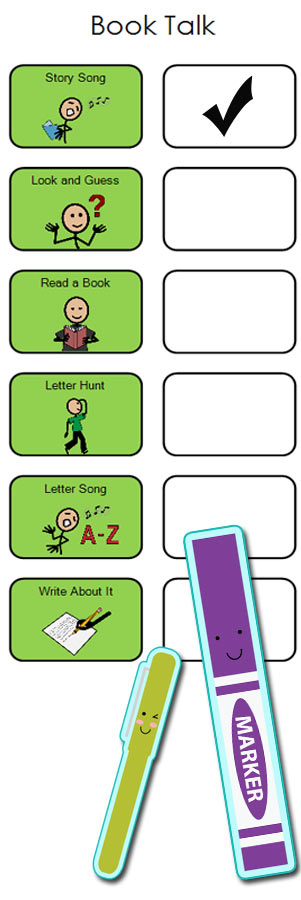

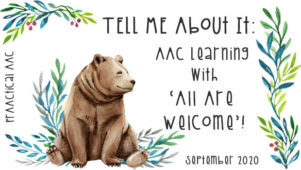
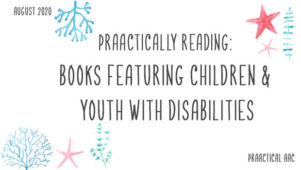
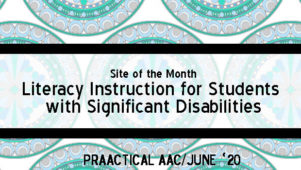
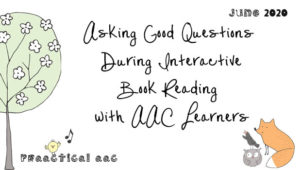
10 Comments
Great ideas! Literacy is intertwined into language learning for all abilities! Thanks always for your resources!
We agree, Kelly, and think that things are changing for the better, but s-l-o-w-l-y. Thanks so much for taking the time to add a comment. 🙂
I found this posting on Literacy Lessons for Beginning AAC Learners very inspiring and would like to use it in a newsletter to SLPs in my county school district. May I have your permission to reprint this?
Patricia Beers, M.Ed., CCC-SLP
Speech/Language Pathologist and AT Mentor
Gwinnett County Public Schools
Instructional Support Center
437 Old Peachtree Road
Suwannee, GA 30024
pat_beers@gwinnett.k12.ga.us
Glad that you found it to be helpful. You are more than welcome to use it, but please provide links to our main site and our Facebook page (www.facebook.com/PrAACticalAAC). Thanks for asking!
I loved this post. Building literacy skills and supporting our beginning communicators in doing so is so important! I like the ‘go for it’ strategy you suggested – when I first began working I had to just tell myself to go for it with my clients and adapt as needed if things don’t work. Thanks for another great post!
Carole, thanks for this post. It is so clearly written and practical, as well as full of ideas and resources to get us started with literacy-based activities for the little ones. Thanks for your generosity to the field of AAC. You are an endless source of ideas and inspiration!!
I love this so much! Keep sharing these gems!! I read them again and think of a new context, a new classroom, a different setting each time. Fantastic post!
Thanks for your encouragement, Rachael and Gloria. Honestly, these kids are SO much fun to work with when we use this approach that it is hard NOT to share it. I smile just thinking back on some of these sessions and the impact that they made on our grad students and the classroom staff. People want to teach these kids, but sometimes struggle with how to do that successfully.
It is so nice to see a post that encourages teachers not to underestimate their AAC users. Too often, parents and teachers alike, assume that because their students are struggling with communication that they are also low achieving learners. 22 years of teaching AAC users has shown me that there is so much knowledge locked inside my struggling communicators. We just have to find a way to unlock it.
Love this article. I will share it with the classroom teacher in our Integrated preschool! I would love to see us using the lesson plan. Thank you!